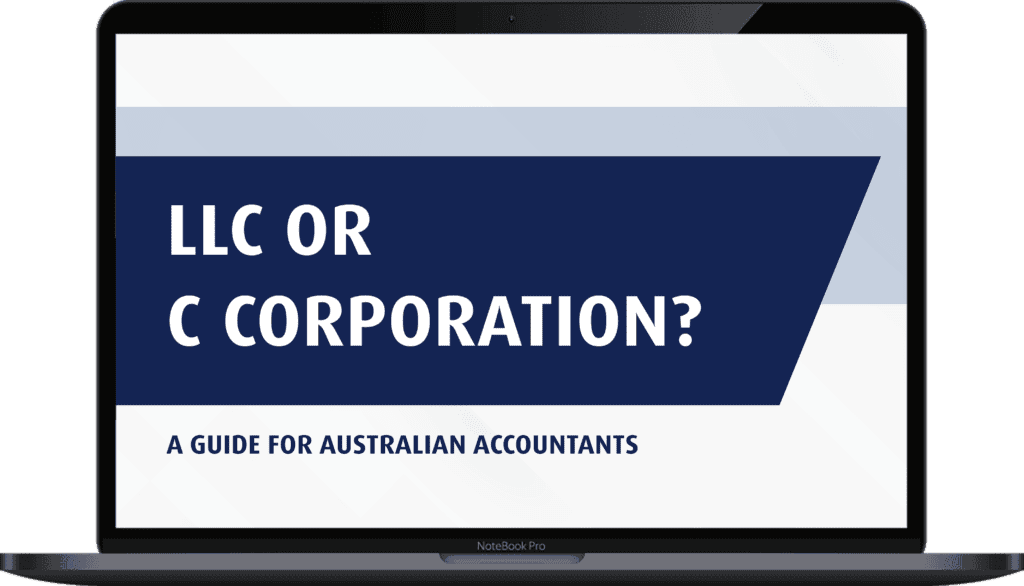Setting Up A US Corporation
In Part 1 of this article we discussed Australians setting up LLCs in the USA, how these entities are taxed in both the USA and Australia.
In Part 2 of this article – we discuss the issues that Australian clients should think about if they choose to incorporate a C Corporation, instead of an LLC.
A US C-Corporation will be easily understood in the Australian context.
It has directors and shareholders just like Australian proprietary companies and most of the corporate formalities that would be expected in Australia.
From an Australian tax perspective, a US corporation will either be a non-resident company for Australian tax purposes or a resident company.
If the client establishes a US Corporation which is considered properly non-resident for Australian purposes it will also most likely be a Controlled Foreign Company (CFC) under Part X if ITAA 1936 either because of the strict control test or the deemed control test.
The CFC rules of course are anti-avoidance rules, but given the USA is Listed Country jurisdiction there should generally be no tax issues for clients who control US Corporations under the CFC rules.
Even if the most of the income derived by the US Corporation was considered to be passive income under the CFC rules, provided the company is properly US tax resident there would not usually be an attribution of income under the CFC rules, unless the income of the US company contains eligible designated concession income or the structure was to be more complicated than a single US subsidiary.
Unlike the position with US Limited Liability Companies, Division 830 could not apply and there will therefore be no question of partnership returns or partnership treatment with the associated lodgement burden and complexity.
No lodgements would be required in Australia in respect of the US entity and usually tax liability would only arise in Australia once a dividend was paid by the US Corporation to its Australian shareholders.
If the Australian shareholder was a company, then the dividend may be considered non-assessable non-exempt income to the Australian shareholder if the necessary 10% participation threshold is met.
Such a structure is much simpler to manage and can help keep cross border compliance costs to a minimum.
Where the US Corporation pays US corporate tax and distributes its profits to shareholders in Australia, there would be no foreign income tax offset available for the underlying US Corporation’s tax paid.
Dividends paid to Australian resident shareholders by US Corporations should benefit from the reduced rate of dividend withholding tax which applies under the Australia-US Double Tax Agreement.
As always, the best advice to be provided to the client is one which considers the client’s circumstances and objectives and deals fully with the possibilities so that the client understands that the choice of particular business structures will come with advantages and disadvantages that should be addressed, and understood, not ignored.
Guide: LLC or C Corporation? A Guide For Australian Accountants
The accountant’s role in helping the client make this important decision should not be overlooked. To assist you, we have created the LLC or C Corporation guide specifically for Australian Accountants. The Guide provides:
 |
|



